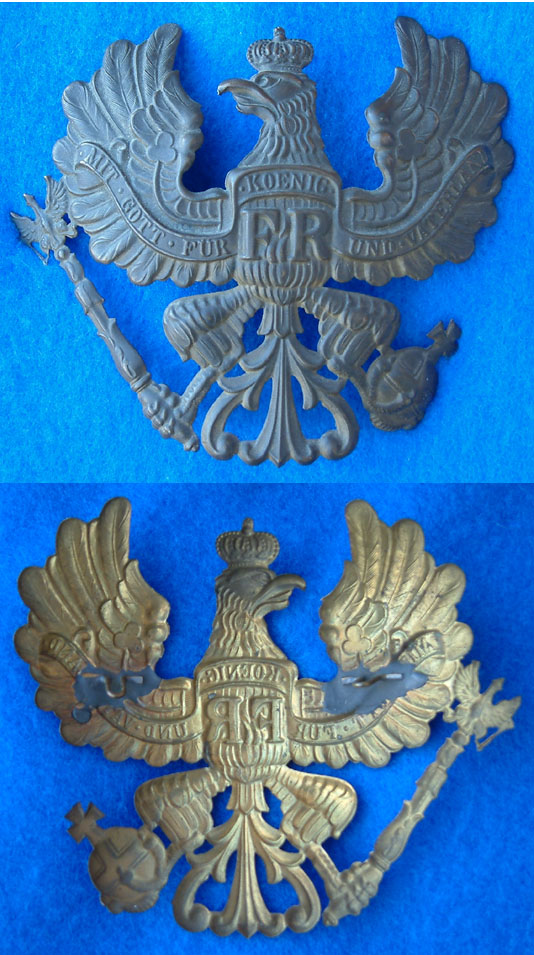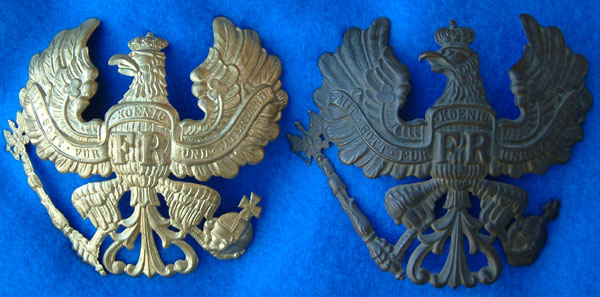A
Anonymous
Guest
I had hoped to add this to Joe's depot mark thread in the old forum, but it wasn't meant to be. Below is an Ersatz helmet I purchased in late August at the antique fair in Bouckville, New York. Bowman refers to this pattern as "Stahlblech." Steel tin sounds a bit confused, but, then, so was Bowman.

For this type of helmet, the overall condition is well above average. Another bonus is the untouched state of the chemically darkened brass. All too often, some collector will mistake this for tarnish and wreck the finish through Brasso polishing.
Unfortunately, the liner is gone. The felt band to which it was sewn is intact, but that's all.
Now for the query. The helmet is marked "B.I.A. VII" over "G." From Joe and Max's research, I take the first part to be "Beckleidungs-Instandsetzung-Amt VII." Does anyone have an idea as to the meaning of "G?" Please, don't say Gendarme; it doesn't sound relevant for a unit engaged in repairing helmets for the VII Armeekorps.

I have a studio portrait of a soldier wearing a "Stahlblech." Note the collar dogs. His shoulder straps bear no cypher. I would also appreciate any leads regarding this individual's unit.

Chas.

For this type of helmet, the overall condition is well above average. Another bonus is the untouched state of the chemically darkened brass. All too often, some collector will mistake this for tarnish and wreck the finish through Brasso polishing.
Unfortunately, the liner is gone. The felt band to which it was sewn is intact, but that's all.
Now for the query. The helmet is marked "B.I.A. VII" over "G." From Joe and Max's research, I take the first part to be "Beckleidungs-Instandsetzung-Amt VII." Does anyone have an idea as to the meaning of "G?" Please, don't say Gendarme; it doesn't sound relevant for a unit engaged in repairing helmets for the VII Armeekorps.

I have a studio portrait of a soldier wearing a "Stahlblech." Note the collar dogs. His shoulder straps bear no cypher. I would also appreciate any leads regarding this individual's unit.

Chas.












